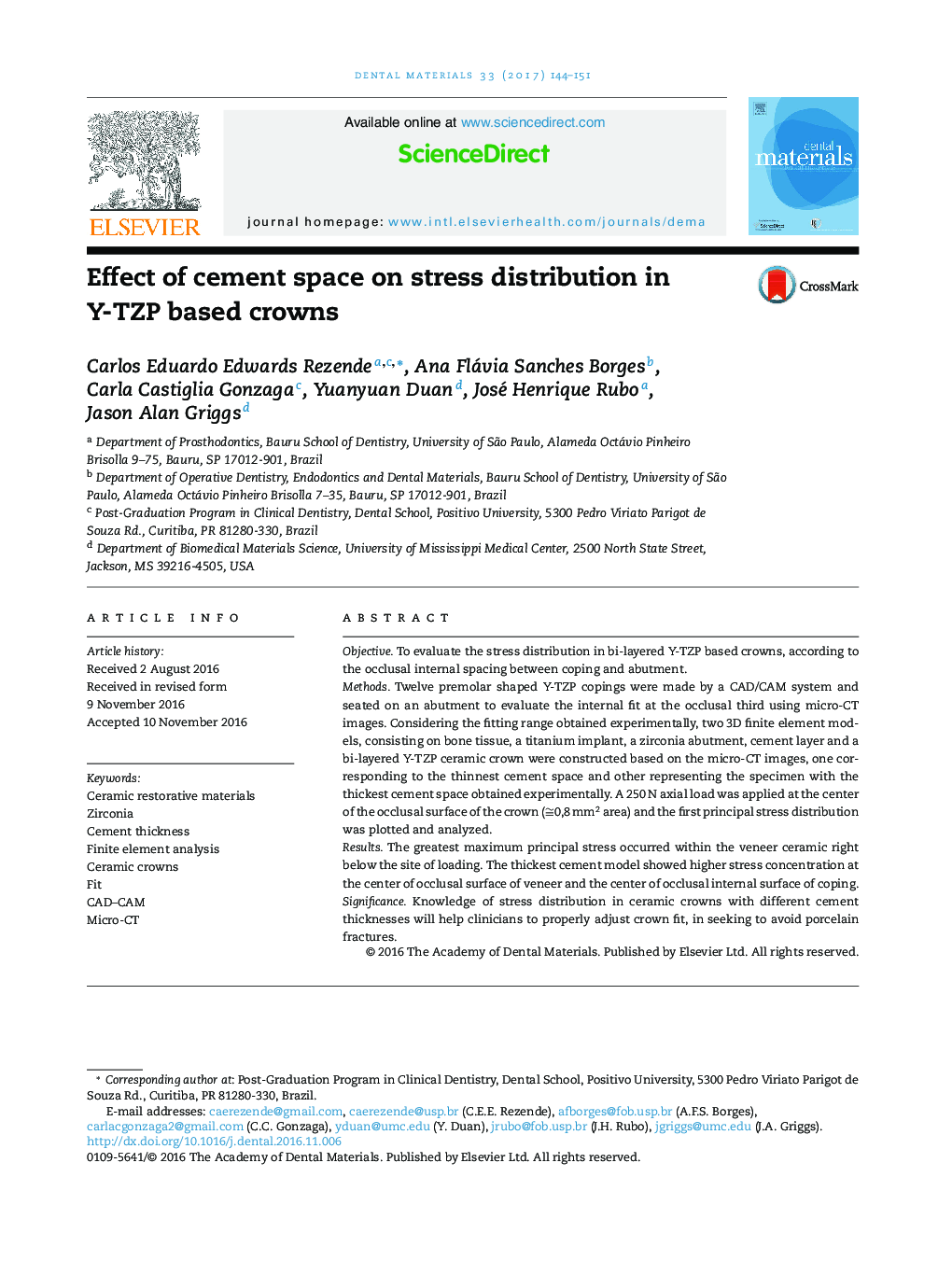| Article ID | Journal | Published Year | Pages | File Type |
|---|---|---|---|---|
| 5433005 | Dental Materials | 2017 | 8 Pages |
â¢There is a considerable variation of the internal occlusal fit of Y-TZP copings made by CAD/CAM technology.â¢A thicker cement layer can lead to greater risk of porcelain fractures in Y-TZP based ceramic crowns.â¢Manufacturing procedures might exert some influence on the internal fit and, as consequence, on the stress distribution in Y-TZP base ceramic crowns.
ObjectiveTo evaluate the stress distribution in bi-layered Y-TZP based crowns, according to the occlusal internal spacing between coping and abutment.MethodsTwelve premolar shaped Y-TZP copings were made by a CAD/CAM system and seated on an abutment to evaluate the internal fit at the occlusal third using micro-CT images. Considering the fitting range obtained experimentally, two 3D finite element models, consisting on bone tissue, a titanium implant, a zirconia abutment, cement layer and a bi-layered Y-TZP ceramic crown were constructed based on the micro-CT images, one corresponding to the thinnest cement space and other representing the specimen with the thickest cement space obtained experimentally. A 250Â N axial load was applied at the center of the occlusal surface of the crown (â 0,8Â mm2 area) and the first principal stress distribution was plotted and analyzed.ResultsThe greatest maximum principal stress occurred within the veneer ceramic right below the site of loading. The thickest cement model showed higher stress concentration at the center of occlusal surface of veneer and the center of occlusal internal surface of coping.SignificanceKnowledge of stress distribution in ceramic crowns with different cement thicknesses will help clinicians to properly adjust crown fit, in seeking to avoid porcelain fractures.
